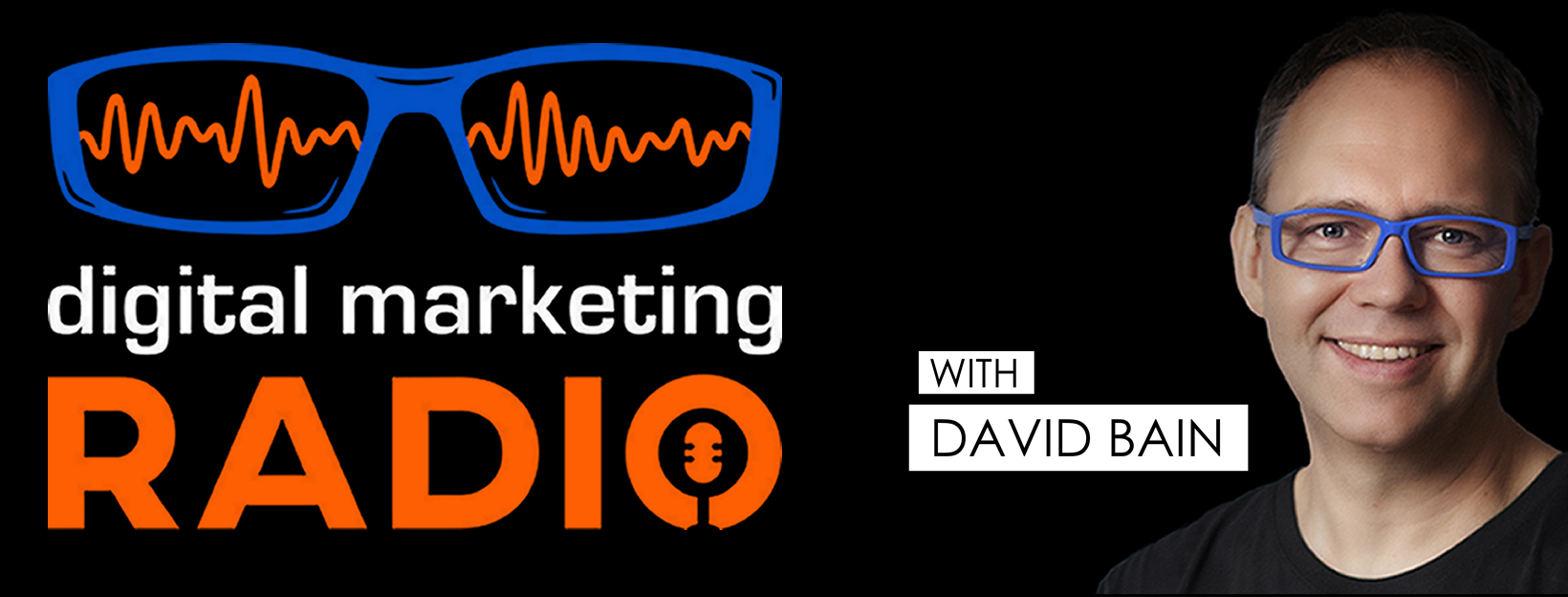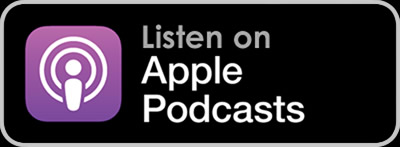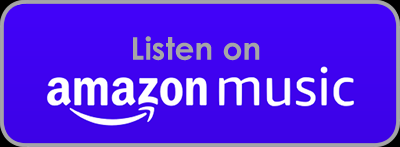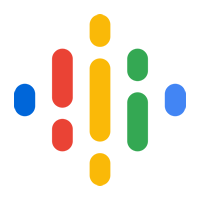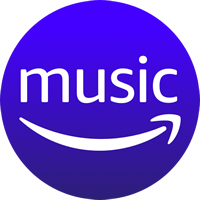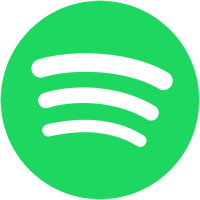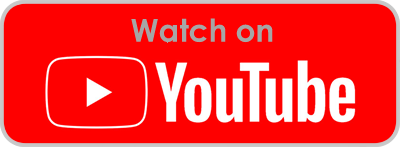Are you itching to get going with live video, but you’re not quite sure how that fits into your overall content marketing strategy?
Maybe you’re currently doing live video, but you’re just not taking full advantage of all the wonderful content that you produce.
In today’s episode we’re going to be helping you to take full advantage of your live video by placing it at the front and centre of your content marketing strategy.
Joining me to discuss that is a lady with over 15 years of experience in social media, content marketing and growing brand awareness. She’s also an over-thinker, a mover, a doer, a baker and a geek. Welcome to the Director of Marketing at Ecamm – Katie Fawkes.
Key questions covered in this episode:
Why live video?
How do you approach a “live video first” strategy?
What is a run of show and why is it important when you’re planning out your content?
What tools do you need to be successful?
What is the future of live video?
How do you re-purpose live video content?
Where does live video fit into a content marketing strategy?
Why live video first?
How do you get started with live video?
Audio recording:
Full transcript:
David Bain
Digital Marketing Radio Episode 228: How to use live video as the centre of your content marketing strategy.
Brought to you in partnership with Semrush. I’m David Bain, and this is Digital Marketing Radio, the show for marketers who want to stay on top of the latest tools, tactics and trends from today’s modern marketing masters. Are you itching to get going with live video, but you’re not quite sure how that fits into your overall content marketing strategy. Maybe you’re currently doing live video, but you’re just not taking full advantage of all the wonderful content that you produce. In today’s episode, we’re going to be helping you to take full advantage of your live video by placing it at the front and centre of your content marketing strategy. Joining me to discuss that is a lady with over 15 years of experience in social media, content marketing, and growing brand awareness. She’s also an over thinker and mover adore a baker and a geek. Welcome to the Director of Marketing at Ecamm. Katie Fawkes.
Katie Fawkes
Hi, everyone. Hi, David. Thanks
so much for having me today.
David Bain
Hey, Katie, all these people, all these guests should start using all these different descriptions and their Twitter handles those guys.
Katie Fawkes
I’m glad you pulled that one. I feel like I overthought it so it seems very appropriate in the description for sure.
David Bain
on your blog, as well, I noticed we’ve got some great some comments already there as well. We’re broadcasting live, we’re recording a podcast, obviously. But we’re broadcasting live on LinkedIn on Facebook. So lots of good friendly comments saying hi to you already. So you can find you, of course, Van Casey over at se e cam.com. That’s e cam with a double M. So Katie, we’re discussing live video content marketing strategy. So why wildlife video?
Katie Fawkes
I think there’s lots of reasons why live video. But I would think that the main two are that it’s really incredibly authentic and relatable to people watching. So it’s a great way to build an audience to build a community, and to get people really excited about the kind of content that you’re putting out. And the second is that it’s a great testing environment. So if you’re thinking that you know, even wanting to get into video, and you’re not exactly sure where to get started, it’s incredibly forgiving. So you can, you can make mistakes, you can continue to kind of get better with your video quality and your sound quality as you grow along with your audience. So it’s a great starting point. And I think you know, as people get more into it, it is amazing how, how much fun it also is along the way. So I would say authenticity, it’s really raw, and people love to relate to it and get to know the real you and a great testing space.
David Bain
And if you really want to you can delete your stream afterwards, of course, as well. But hopefully you don’t feel that you have to do
Katie Fawkes
it. Yeah, don’t keep it I think people love. People love getting an inside look at who you are and what the content is that you want to share. And it’s okay that it’s not perfect. So keep that in your mind, as you’re thinking about live video, it doesn’t have to be perfect to be really powerful, and something that people really take a lot of value out of.
David Bain
So talking to mutual friends in Anderson grey in Episode 226, of Digital Marketing Radio, and we were talking about live streaming for b2b brands. Because I was saying to him, I can understand live streaming for personal brands, but unfortunately, for whatever reason, many b2b brands don’t seem to be embracing live video quite as much do you think live video is great and useful for any type of business out there?
Katie Fawkes
I do. I think that b2b brands have a little bit more of a challenge as they think through the content that makes the most amount of sense. And so I think I’ve always been a big believer in helpful content. So if you can think about how you can help others, whether it’s a business or an individual, you can put that content out in front and out in front of people using video of any kind and certainly live videos an easy way to get started doing it. So really, I think as it relates to b2b brands, they really need to think through who are who are their customers, and what could they give those customers as far as how can they create helpful and authentic valuable content? So it’s really thinking through the why behind what you’re doing and how you can get that out there?
David Bain
Great. Okay, so if a b2b brand or if another business is just about past the why stage now and then just about committing to getting started with live video, what are a few steps to get started with it?
Katie Fawkes
Yeah, absolutely. So you’re gonna want to think through, you know, thinking first about your why and the content that you’re getting out there, you’re gonna need, you’re gonna need to have a computer. You’re gonna need to have a camera and a microphone. And then from there, you can literally get started with just those couple of things. So you know, just just the basics to be able to get up and running and do a lot of testing. So figure out, you know what, how the content is working with your audience? Are people engaged? are they finding it really interesting. And then you can add on additional things. And maybe that’s bringing in guests or panel discussions, maybe that’s taking it. But you know, behind the scenes, really let your content define how the broadcast is going to look and feel and the platform that you’re going to send it out to so. So thinking that through an E, can we make a live streaming, and video production software, so you could absolutely get started with just your phone, and you know, and go out to Facebook or YouTube or any of the major platforms, but having a software will let you do things like plan out your content in advance, you know, pull in some graphics and you know, an additional additional layers to make your your broadcast a little bit more professional, a little bit more interesting for viewers on the other side, like what you’re doing here, you know, you have your, your entire frame sitting around that has all of your branding on it. So you know, thinking through again, content first, and then equipment and the software that you need to be able to hit the content that you’re looking for.
David Bain
Absolutely. But I love how you started with test, you know, just test to begin with and never know what works.
Katie Fawkes
Test and get into get into the practice of doing it. I think some of the most valuable guidance that I had when I was just starting to get into live streaming and into video production was that, you know, I do a daily test, literally go use your phone and go out to whatever platform you want, whether it’s you know, your Facebook page, or maybe it’s just even Instagram, and do just really quick videos, but but put yourself out there and see how you look and sound and see where you might want to make improvements and just get into the habit of pushing the go live button without having a panic attack. Without worrying what it’s going to be like on the other side, you’ll find that the more you put yourself out there, and the more that you test and try you’ll see what you like about it and what you could make improvements to as well as what the responses, you know, those little tests, whether they’re Instagram stories, or, you know, maybe you’re on Snapchat or tik tok, those kinds of places help give you a really great test environment and the kinds of content that’s going to work and the, the format. So you know, how does it look? How does it sound? What are people liking about it? And it’ll give you that confidence to?
David Bain
Absolutely, and no matter how much you plan beforehand, Episode 100, or video 100 is going to be terrible, or is gonna be it’s gonna be a lot better compared with episode one. Because you just can’t predict what’s going to happen. You can’t necessarily train yourself how to use the microphone, use the camera and think of the flow that’s going to appeal to your target audience. So just, I guess, design, the live video, the live content that you’re going to produce based upon audio feedback? Is that what you’re saying?
Katie Fawkes
Yeah, absolutely. I mean, I, you know, I think it’s important to plan things out. And I think that I think that planning goes a long way. As you said, I’m an over thinker and a planner, myself. And so having a good understanding of what your what we call the run of show what your run of show is, and what order you want to get the content out, and what are the different graphics and things that you’re going to bring into it. But like you said, live video, something is always going to go wrong, you know, like a guest is going to come in and have terrible video and audio or you know, you’re having internet problems, there’s going to be a snowstorm, that’s something something inevitably could and may and will go wrong when you’re broadcasting. But you need to remember that one of the benefits of live video is that people know that you are there in the moment. And it’s real, and it’s authentic, and they are much more forgiving if you’re just out in front of them. And you’re honest. And really, we found that, that some of the most popular live streamers out there, those moments where things go wrong, and they’re able to troubleshoot their way through it and still have an engaging experience with their audience, or no one to call it and say, Hey, we’re going to we’re going to stop this now. And we’re going to come back another day, the audience loves them even more for that, because they see that they are real people and that they’re trying and that they’re thinking about their content and their audience first. So you know, the technology is always going to be a little bit dicey here and there as you’re especially as you’re getting started. But again, don’t let that stop you from having a good plan and trying to implement against that and knowing when things go wrong, how to respond and how to deal with some of those challenges as they come up in a way that’s really human in a way that, you know, helps let your audience know that that you care about getting the content out to them in a way that’s going to work.
David Bain
Absolutely. He talks about being an over thinker, I’m an over thinker as well. And I think doing live is a great way of actually counteracting that, because you can only plan everything you’ve got to commit to a date and a time and that’s when you’re going to go live and whatever happens it’s going to have to work to the best of your abilities at that moment at that time.
Katie Fawkes
Yeah, and it does get you I it it does make things a little bit easier. I you know, when I first started doing video, I mean even even at past jobs, The second that the camera was in front of me, I would freeze up, I, you know, I’ve done a lot of stage acting, and I’ve done a lot of presentations in person never really had a problem with that, but something about the camera being in front of me. And the the ability in my mind that okay, well, I can always do another take, right you know, a script, I can always do another take live video is really taught me to just, you know, plan ahead and power through, there’s not another take, there’s, you know, there’s focusing on just getting the content out there, and it doesn’t have to be perfect. And I think that’s made a lot of improvements, even in how I approach recorded video, you know, I think, if you start with with thinking through how you would do it live, or even starting with a live video, it does make it a lot easier to not end up where you’re spending two, three days for, you know, a week, re recording and re recording and re recording because it’s not as perfect as you want it to be. Whereas it probably is good enough to get out there. And you’re just overthinking and you’re in your own head to try to get it to look, some level that is not going to make a big difference in the end result, you need to be able to get that value out there in front of your customers, get that content out there so that people can appreciate it. And then you can continue to grow and get better in that process.
David Bain
Absolutely, I’m sure five pieces of imperfect content is generally gonna be a lot more effective than one piece of perfect content. And that’s your judgement on what perfect content is it’s not necessarily what your customers would believe is perfect content.
Katie Fawkes
Absolutely. Absolutely. Yeah. And that I mean, it’s, it’s the value that matters. And it’s getting into that into that routine, so that you’re in front of people, if you’re spending, you know, months and months and months building one amazing, perfect video and getting it out there, your audience is last, you know, an entire month of seeing you on a regular basis and getting to know you better, you know, you may have created that one perfect piece of content, and it may perform well. But you’ve missed a bunch of opportunity to really build that community and people in the end buy from who they know, like and trust, right, that’s what we hear all the time. So getting out there on a regular basis in front of them and getting to know your, your listeners and your viewers is really a way to get them to be buying from you and and, and forming a relationship with you and feeling confident to recommend you to their network, right. So it starts that starts that cycle and really helps also get you better in front of the camera going forward for some of those larger projects.
David Bain
We talked a little bit before the call about you approaching content from a live video first perspective, what does that mean? And how does live video from your perspective fit into the overall content marketing strategy?
Katie Fawkes
Yeah, so um, so he can and most of the customers that we have are typically thinking about their content marketing strategy with a live video first mentality. And when I say that, I mean that they are creating content live, but they’re planning everything out in advance. So in in EMI, we have a feature called scenes and that lets you literally plan out your entire run of show step by step. So you’re going to say okay, for my first scene, I’m going to have a countdown timer or pre show and they have all their graphics that relate to that. And that’s all planned out. In the second scene, I’m going to do a shot of just me on camera. And you know, when I welcome the audience have questions, so you can plan all that content out. And then you go live and you’re able to flow through that content, have an engaging experience with, with your customers with your viewers thinking about that live audience, then that video is a completed video. And if you’re using a tool like EA, can you get a high quality recording version of that video that’s just saved automatically to your computer, that you’re then you’re done. You flowed through and created a video in the format and the way that you wanted it to, then you can do something like chop off maybe the beginning that’s not relevant to a replay audience, maybe you want to chop off the end that has a lot of you know, questions and engagement with your with your live audience that’s not relevant, then you haven’t produced video, you’ve brought your graphics all in, you’ve had, you know, your entire flow of your show is looking fantastic. You can then upload that into YouTube, you can strip the audio out of it and send it over to a podcast, you know, you can put that that video into a tool like descript and pull the transcript out, you can turn that into a blog post. I feel like these days in particular, most of us are wearing lots of different hats. We have lots of amazing ideas, but but having the time to get out the content that you want to get out is difficult. So if you think about it from a live video for a standpoint, you’re able to continue that flow of getting the content out there you’re engaging with your audience, but then the you know, you’ve created a great repurpose engine for the every time that you are going live and getting that content out there. You’re also creating recorded videos, you’re also feeding into a podcast, you’re also creating blog posts, you don’t need to worry about all of the other things that you would have to be spending individual time planning out every time you can then focus on the content and just put Through that engine. And you think it has made a big difference in a lot of in a lot of our customers lives because it gets them into the flow of how they’re thinking about their content. It’s growing their business, both through the engagement in their live videos, as well as all of the other audiences that they’re seeing across all those other content channels. And they’re, they’re only creating the content once. They’re creating the content when they go live. But they’re, they’re thinking ahead about how each audience is going to receive that. So that as they’re creating the content, they’re thinking about it, knowing that they’re going to make these tweaks and send it into these different formats.
David Bain
Yeah, I think that’s the key, it’s knowing exactly what you’re going to do beforehand. And planning your life shows that your live stream around the content you’re going to produce, it doesn’t have to appear to the live audiences, that’s what you’re doing. Because as far as they’re concerned, that’s the key piece of content, you’re interacting with them personally, you’re answering their questions. And it’s a lovely piece of live content. And you’ll probably get to that stage after maybe 20 3040 live streams to get a feel for the type of content that your audience is likely to interact with. And they’re wanting to appeal. appeal. But once you get to that stage, it’s absolutely incredible. I mean, I did a live stream about two years ago, and I turned that into a book. And I had a, it was a four hour live stream. I had 134 marketers on that, or answering the same question, what’s your number one extra tip for the coming year. And naturally, the tips that they shared, fell into different categories, be it content marketing, SEO, different types of paid marketing, that ended up being the chapters of my book, now, and I had the whole content transcribed, and actually was ITAR as long as that particular live stream was eight hours long. And I remember that because eight hours, ends up being roughly 60,000 words of content, which, of course, is the average book length. Now, I’m not advocating just to use a transcript as a book, it does require a significant amount of editing, but it just shows you, yeah, you can do so much from an from a live stream. absolutely incredible. And yeah, and if you go for Sorry, sorry, if you I
Katie Fawkes
was gonna say if you sat there and said, you know, okay, today, I’m going to write a book. And you know, and you and you created this entire outline, and you thought about the, the, you already had such amazing content that would be valuable to book readers but but the process of just coming at it from only thinking about it as a book, or only thinking about it as a blog, blog post, or only thinking about it as a recording video would take you a huge block of time for each of those things, but you already had the content that would be valuable. So it you know, even if you’re spending however much time making those tweaks and editing in the text itself there, you know, you’ve already sped up the process and been able to get that content into the hands of an audience. So that’s awesome. I love it.
David Bain
Oh, absolutely. It’s, it’s incredible what you can do, there’s lots of different tools out there are there any other tools that you can think of that you’re actually actively using at the moment that are really effective for live streaming.
Katie Fawkes
So,
so many, so obviously, I use I use he him love to create the videos themselves, we use a tool called Quick, qu ICC, and that, that lets us actually clipped down our, our videos into shorter clips. So we can use those for promoting before after, and it burns captions right onto the video in all of our branded colours, which just looks a little bit more engaging than than just having a regular video. And it’s it’s an awesome tool, as I said, we use a script. So that’s a transcription tool. And we we pull the transcripts for all of our videos that we’re able to turn them into show notes, and blog posts and all of the text copy. And we don’t do a lot of podcasts. ourselves. We haven’t dived into that yet. So I don’t use a lot of podcasting tools. That’s probably it’s probably pretty much it. I mean, by and large, we’re really, we’re really creating and thinking about our content. And just planning that graphics that we put in, you know, we use Canva an easel or to kind of easy to use graphic creation tools that to create all of our, you know, branded overlays and graphics that we put into our video. But we don’t, we don’t do a lot of video editing, because we’re able to think and plan ahead. So we’re able to kind of lay out and pop those graphics in advance. That means we don’t have to go back and, and spend a bunch of time you know, seaming everything together laying graphics on afterwards, because we’re doing that while we’re live.
David Bain
I love how you mentioned descript Actually, that’s an incredible up and coming to I’ve played with it a little bit. Yeah, yeah. But there are so many incredible tools that are just starting up or really becoming heavily used at the moment. Rosa’s saying in the comments. 60,000 words in livestream became a boot cue to the bookseller. It’s over a couple of 1000 copies. Thanks rose. I would not necessarily recommend that you aim for you know 1000s of sales with a book, I think a book is more about being a really fancy business card and making people aware of your brand. So that they will find out more about us. It’s all about the target audience that you’re aiming for, I think,
Katie Fawkes
yeah, absolutely. I mean, it may not be a book, it might, again, it might be a blog post or a downloadable PDF that then you’re able to use to capture, you know, to capture email or to, you know, as a lead generation tool. So, yeah, there’s, if you think about, I mean, that Yeah, that’s a lot of words, I mean, a shorter live stream would be, you know, a short, shorter, I don’t know what the exact, you know, an hour of going live with that would be in words, but, but you can use those words in a bunch of different ways. So
David Bain
I just want to show you, I want to show you something else here quickly, Katie, and it’s not necessarily could be very useful for podcast, podcast listeners, but I’ll describe exactly what’s going on here. And so I’m going to go to just my screen, and then I’m going to cut to my other desktop just to show you what’s going on here. And I’m using a piece of software called otter otter.ai, to transcribe what is being said, as we’re actually discussing things here. And we you can see how accurate or fairly accurate the whole transcription is, it puts in sentences, it’s amends words as it sees the context of them as well. So it’s a really, really effective way to create a transcription as well. And so that’s, that’s what that’s what I’m actually using at the moment to create a transcription. But there’s so many incredible tools he said out there and so many different ways to do that.
Katie Fawkes
I love it, we actually, we have an otter account, and I’ve never, I’ve never thought to use it live while I’m broadcasting that’s a really smart tip.
David Bain
I love it. Well, what you have to do is you have to find a way of combining your audio sources, because normally, your microphones will only be you or not you and a guest combined. So you’ve got to use another audio interface or another way of combining the audio to create that. But I’ve done that, for this particular episode. I love to test something different every single episode, and that’s the thing that I’m testing. Okay, well. So let’s segue to the second part of our discussion. There’s no time for Katie’s thoughts on the state of digital marketing today. So starting off with SECRET SOFTWARE. So Katie share a lesser-known martech tool that’s bringing you a lot of value at the moment and why that’s why that tool is particularly important for you.
Katie Fawkes
Well, now, I’ve already mentioned it, but descript is my new favourite right now. Maybe that’s a secret, since we just talked about so how
David Bain
to use it for them. And how do you actually use it?
Katie Fawkes
When I’m so we’re newer to it, we’ve only been using it for the last few weeks. Actually, prior to that we were doing a similar process. But through otter, which we still haven’t are using, as well. But I love that descript just has so many more tools built within it. I mean, I haven’t even begun to peel back the layers of the onion. That is that software. But you know, really, it lets you transcribe all your videos, it shows you the exact places within the video that’s playing transcription from so you know, as you’re creating content, it’s just a really great tool to have in partnership as you’re thinking about how you might want to repurpose it, whether that’s shorter clips or clips that have you know, those burning captions like what quick does it it lets you kind of be able to see your video and the layers of it. So you know, the video and the text behind it in a really, really unique and powerful ways. It’s it’s an awesome tool. And I’m sure in a couple of weeks, I’ll know more. But right now, it’s I’m just amazed by it,
David Bain
it is a wonderful tool, you can actually edit audio and video by deleting words in a sentence. And that’s just utterly incredible. I mean, it’s not gonna be as precise as using a tool like Adobe Audition. But it’s it’s for the amateur podcaster or really any video maker really, that’s just produced a discussion type format, it’s and once you take out a few words and make the video much easier to watch. It is a wonderful, wonderful tool to use
Katie Fawkes
it. And it’s so easy, believe me if I can use it. Anyone can use it. It was It’s amazing. It pulls out all the items and likes that people say or that you know, it really it can make a big difference in the quality and the output.
David Bain
So the only reason I’m not using it at the moment is I like to make the whole process as efficient as possible. And if I can perhaps create the transcript while we’re actually recording it as opposed to uploading the video afterwards then that might just win but it depends on the quality and the outcome. Yeah, okay, so it’s no it’s time to give someone else I mentioned someone else who deserves it, who’s been a great marketer to follow good to follow on social media. So that is a magical marketer. So who’s an up and coming marketer that you’d like to give a shout out to and what can we learn from them and where can we find them?
Katie Fawkes
Alright, so I’m gonna do a shout out to doc rock. And doc rock is our beta group moderator and he is the king of community management and keep immunity growth. I know that’s what he claimed of me last time when he was on this call, but I had to pass that for because I think that everything that I’ve learned I’ve, I’ve learned in many ways from Doc, he is just one of those people that is constantly thinking about how to give back to the community and how to really highlight content creators and and build this network that really has become in many ways a family. And certainly he’s done the same in in our groups and really helped me a lot with as far as thinking about community really differently. So he’s fantastic. And he does a tonne of tonne of live streams and tonne of different tools, you can find him by searching doc DSC rock. He does. He does a DJ live show. He does a lot of trainings on live streaming. And as I said, He’s constantly helping us do all the testing and pushing the buttons in our beta testing group. So
David Bain
where’s the best social platform to find them on?
Katie Fawkes
Facebook and also twitch?
David Bain
twitch? Okay, great. Yeah, I’m an experimenting, broadcasting live on Twitch, I think you’ve got to really push the channel yourself to get a bit of organic reach to begin with. But it’s an interesting up and coming platform. Obviously, it’s used by a lot of gamers, do you think Twitch is something that can be used by any live streamer?
Katie Fawkes
That’s a really great question. Um, I’ve been experimenting, we’ve been experimenting a little bit more with it. Certainly, it’s big in the gaming space, it seems to be trying to be a little bit bigger in other kinds of fields. Like, they seem to have a lot of cooking, cooking shows and programmes. So I it’ll be interesting to see what happens with it. And certainly, it’s it’s definitely really ingrained in the gaming space. But I think it’s got potential to go beyond that. And it has a lot more interactivity with it. So you know, there’s a lot of they use a lot of like, widgets and, and graphics that take over the entire screen as viewers are engaging. So I think there’s a lot we can learn from twitch even if, even if we’re not on it, there’s a bunch of cool things that that they do really well. So okay, well,
David Bain
let’s move on to this or that route. So is the this is the quick response reigns. 10 quick questions, Just 2 rules. Try not to think about the answer too much. And you’re only allowed to say the word both on one occasion, so use it wisely. Are you ready? Tick Tock or Twitter, Twitter, Facebook or LinkedIn,
Katie Fawkes
Facebook,
David Bain
YouTube or podcast,
Katie Fawkes
YouTube
David Bain
traffic or leads.
Katie Fawkes
Traffic,
David Bain
paid search or SEO, SEO, ads or influencers? influencers, Google ads, or Facebook ads,
Katie Fawkes
Facebook ads,
David Bain
email or chat, chat, Mar tech stack or all in one platform.
Katie Fawkes
Mar tech stack
David Bain
and one to one or scale
Katie Fawkes
went one
David Bain
without saying the one that was that had the biggest pose was traffic or leads. I know you said traffic. Why did you see traffic then?
Katie Fawkes
Yeah, it went back and forth. I feel.
Yeah,
I don’t know if I have a specific answer. I feel like for us, we’re always thinking about how can we get more people back to our site? Because we know that once they see it, then it’s easy, then we can convert them. So I yeah. Yeah, I don’t know. I don’t know if I have a total Great answer for
David Bain
you. Maybe Maybe it means that. I mean, you said organic SEO rather than paid. So maybe it means that you’re getting better value from driving organic traffic instead of paid traffic. And obviously, leads are probably more something that you would pay for from paid traffic.
Katie Fawkes
Yeah, that makes sense.
David Bain
second guessing you but let’s move on to the $10,000 question. If I was taking the $10,000 you had to spend over the next few days in a single thing to grow your business? What would you spend it on? And how would you measure success? Oh, my goodness, this
Katie Fawkes
is the hardest question. You told me about this beforehand. And I still don’t know if I have a great answer for it. I’m gonna cheat because I didn’t use my both last thing that I wish I would build a really fantastic live streaming studio or video content creation studio. So multiple cameras and mixers and sound and the ability to really have a dynamic space that we could use to create content. And I think that the what was the second part again of the question,
David Bain
I mean, essentially it’s how you’d implement it. So it’s all what would you spend it on how you’d implement it but it’s funny that you’re going for content again, because we hand at Wilcox. Lincoln LinkedIn ad specialists on episode two to five with you to understand grey episode two to six and both of them gave The answer of spending $10,000 on content and essentially you’re saying, build a studio to produce content. So content very, very important. But obviously, if you if you plan it, so if you’re spending that much on a studio, what type of content are you producing? Is there any particular type of video content, livestream content, I presume,
Katie Fawkes
yeah, would probably be again, you know, live live first and then repurpose that content out across multiple channels and into different spaces and types of content. Um, we’ve been really building almost a network of different different shows with different kinds of content to be helpful across our audience types. And so I think as I think more about that, it would just be a really neat experience to have a shared space that people could be pop into be able to broadcast out from or, or, you know, bring guests and experts on for different kinds of panel discussions. Us Yeah, we’re all about helpful content, being able to show everyone how they can do it really professionally, and really effectively. So yeah, thinking through content content first, and how we can be a good example of that for anyone watching.
David Bain
So so far, we’ve been focusing in on what you’re currently doing digital marketing wise, but no, for the final question, I’d like to focus on what you’re going to be doing next, NEXT ON THE LIST. So what’s one marketing activity or tool that you haven’t tried yet? But you want to try your test soon?
Katie Fawkes
Oh,
yeah. So I’m in complete mode of evaluating and restacking my marketing, my marketing tools. So we’ve been I’m about to jump in and test out a tool called click up. Right now we’re using Trello as our project management tool, and it works fairly well. But I think that there’s a lot of stuff that that we could do as far as getting a little bit more organised and being able to automate a few more processes. So looking to create efficiencies and hoping that clickup will be a good a good tool for us to try that with.
David Bain
Super. Okay, well, that just about takes us to the end of our discussion. You’ve been listening to Katy Fox from eecom, who On today’s episode of Digital Marketing, Radio shares, great tips about live streaming, SECRET SOFTWARE descript sam so you’ve been using it a bit Katie, you’re probably gonna be using it a bit more. Maybe even trying otter.ai a little bit. Can you remind me who your magical marketer was? It was Doc,
Katie Fawkes
Doc rock doc rock. rnc K. Doc rock.
David Bain
Okay, and so, you know, you shared lots of great resources there. I’ll make sure those links are included in the YouTube video link. And of course in the show notes over at Digital Marketing radio.com Katie, what’s the best social platform for someone to follow? Just to say hi to you?
Katie Fawkes
Oh, my gosh, I’m on all of them and probably most on Facebook. So, if you want to find me there, you can find me either by my name FA w. k s. Or you can find me under e m. ec. Hmm.
David Bain
What do we stand for? Thank you so much for joining us. I’ve been your host ever been. You can also find me producing podcasts for b2b brands over at casting credit.com if you want to watch the next episode live subscribe on the Digital Marketing Radio YouTube page. And if you’re already listening to the show on Apple podcasts, Spotify AMS music, tell a friend is good to share. Until we meet again, stay hungry, stay foolish and stay subscribed. Aloha
Bot
radio.com Digital Marketing radio.com Digital Marketing Radio, Digital Marketing Radio, digital marketing, Marketing radio.com

